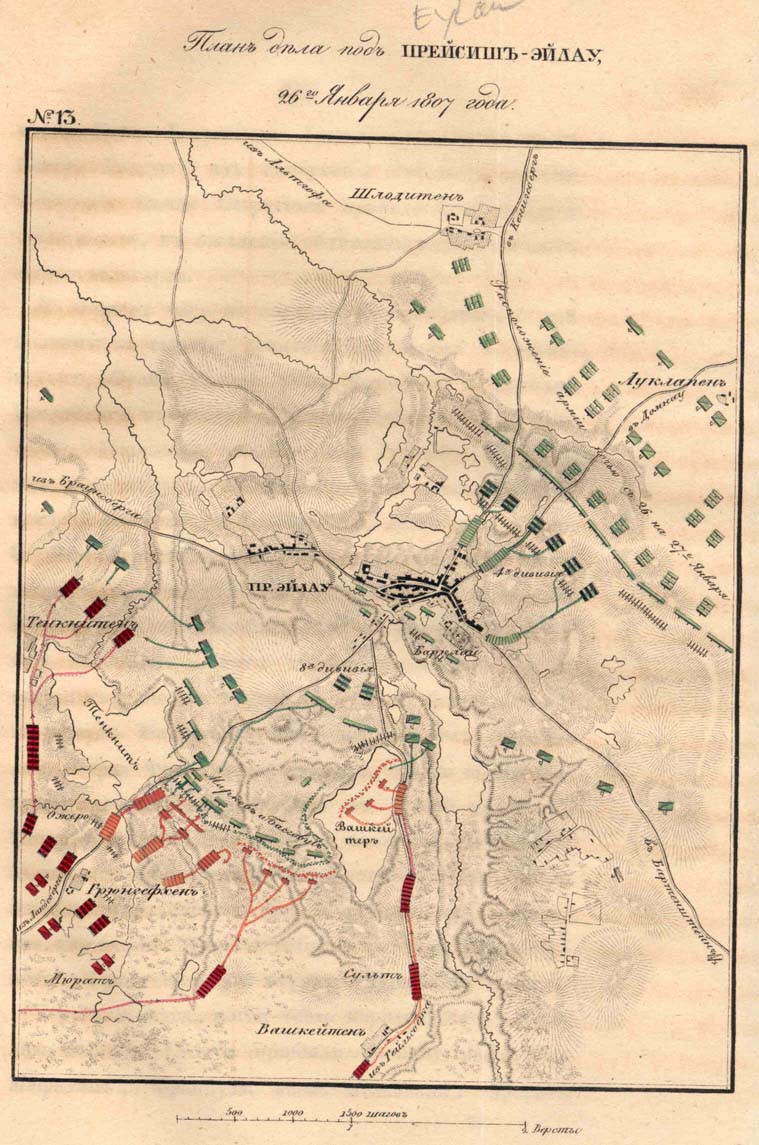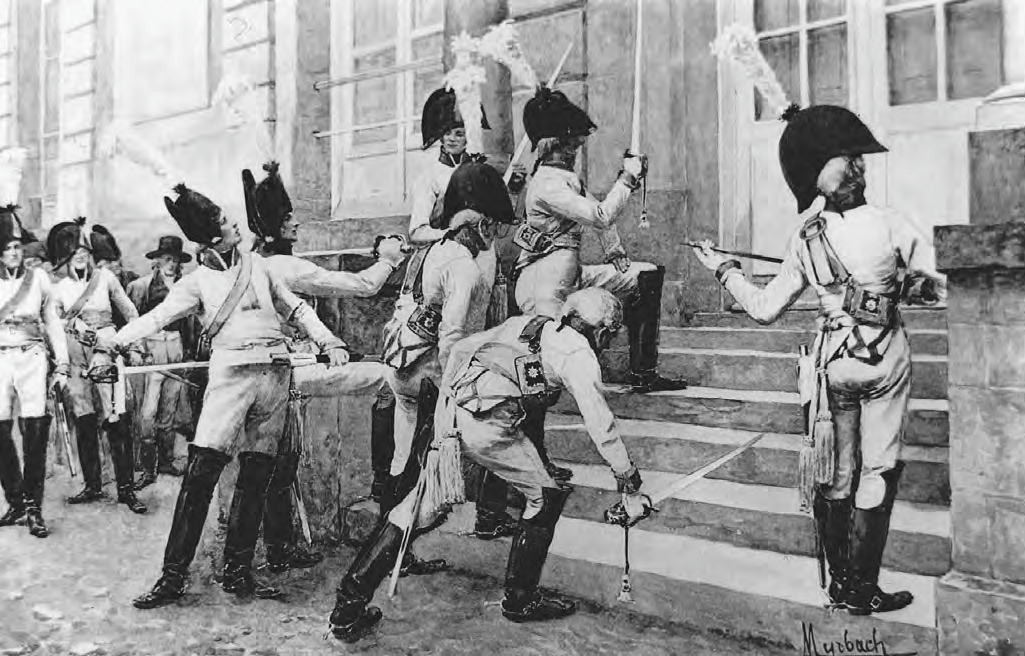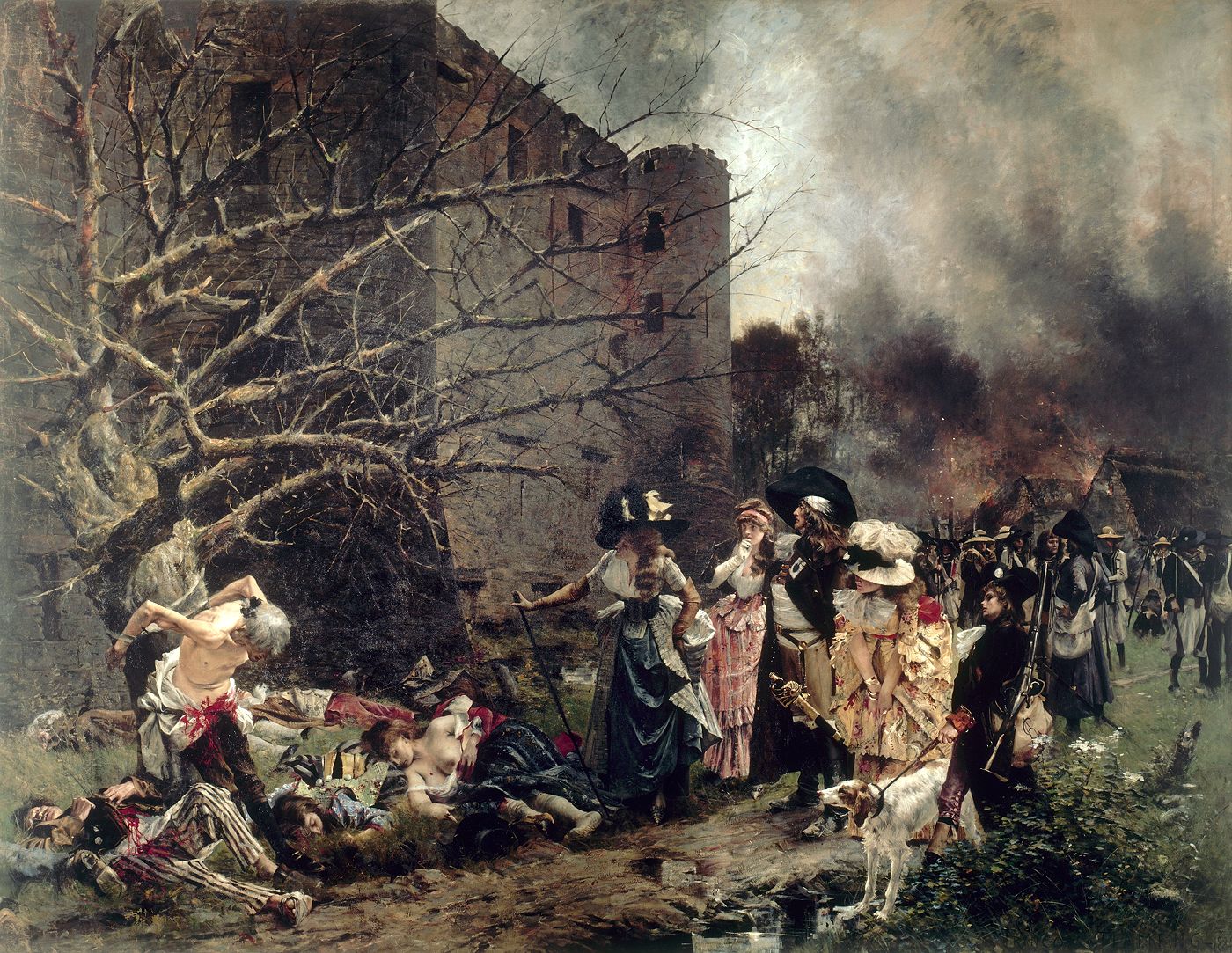|
Louis Lepic
Général de division Louis, Comte Lepic (September 20, 1765 Montpellier – January 7, 1827 Andrésy) was a French cavalry commander of the French Revolutionary and Napoleonic Wars. He eventually rose to the rank of ''général de division'' and held the prestigious command of the ''Grenadiers à Cheval de la Garde Impériale'', the senior heavy cavalry regiment of the Imperial Guard.Fierro; Palluel-Guillard; Tulard, p. 904 He was made a baron in 1809 and then became a count in 1815, after which he was known as ''Comte Lepic''. Early career and Revolutionary Wars Born the eleventh child in a poor family from Montpellier, Lepic joined a dragoon regiment at age 16 and benefitted from the outburst of the French Revolution, which facilitated his promotion to squadron commander (March 1793). He was at first involved in fighting against the Vendéean insurrection, before moving to the 'Army of Italy' in 1796, where he was remarked for gallantry and was wounded several times. Lep ... [...More Info...] [...Related Items...] OR: [Wikipedia] [Google] [Baidu] |
Montpellier
Montpellier (; ) is a city in southern France near the Mediterranean Sea. One of the largest urban centres in the region of Occitania (administrative region), Occitania, Montpellier is the prefecture of the Departments of France, department of Hérault. At the 2020 census, 299,096 people lived in the city proper, while its Functional area (France), metropolitan area had a population of 813,272. The inhabitants are called ''Montpelliérains''. In the Middle Ages, Montpellier was an important city of the Crown of Aragon (and was the birthplace of James I of Aragon, James I), and then of Kingdom of Majorca, Majorca, before its sale to France in 1349. Established in 1220, the University of Montpellier is one of the List of oldest universities in continuous operation, oldest universities in the world and has the oldest medical school still in operation, with notable alumni such as Petrarch, Nostradamus and François Rabelais. Above the medieval city, the ancient citadel of Montpelli ... [...More Info...] [...Related Items...] OR: [Wikipedia] [Google] [Baidu] |
Général
is the French word for general. There are two main categories of generals: the general officers (), which are the highest-ranking commanding officers in the armed forces, and the specialist officers with flag rank (), which are high-level officers in the other uniformed services. General officers Army History The French army of the monarchy had several ranks of general officer: * ("brigadier of the armies of the King"): a rank in a grey area of seniority, conferred on certain colonels who were in command of a brigade (''cf.'' the grey area of the naval "commodore" rank given to certain captains, the equivalent of army full colonels, who had been in command of a group of ships and over the captains of the group's other ships). These officers wore a colonel's uniform with a star on the shoulder straps. This rank was abolished in 1788. * ("field marshal"(major general)): the first substantive rank of general. The wore a special uniform, blue and red, with a single bar of gold ... [...More Info...] [...Related Items...] OR: [Wikipedia] [Google] [Baidu] |
Battle Of Eylau
The Battle of Eylau (also known as the Battle of Preussisch-Eylau) was a bloody and strategically inconclusive battle on 7 and 8 February 1807 between Napoleon's and the Imperial Russian Army under the command of General Levin August von Bennigsen near the town of Bagrationovsk, Preussisch Eylau in East Prussia. Late in the battle, the Russians received timely reinforcements from a Kingdom of Prussia, Prussian division of Anton Wilhelm von L'Estocq, von L'Estocq. After 1945, the town was renamed Bagrationovsk as part of Kaliningrad Oblast, Russia. The engagement was fought during the War of the Fourth Coalition, part of the Napoleonic Wars. Napoleon's armies had smashed the army of the Austrian Empire in the Ulm Campaign and the combined Austrian and Russian armies at the Battle of Austerlitz on 2 December 1805. On 14 October 1806, Napoleon crushed the armies of the Kingdom of Prussia at the Battle of Jena–Auerstedt and hunted down the scattered Prussians at Battle of Pren ... [...More Info...] [...Related Items...] OR: [Wikipedia] [Google] [Baidu] |
War Of The Fourth Coalition
The War of the Fourth Coalition () was a war spanning 1806–1807 that saw a multinational coalition fight against Napoleon's First French Empire, French Empire, subsequently being defeated. The main coalition partners were Kingdom of Prussia, Prussia and Russian Empire, Russia with Electorate of Saxony, Saxony, Franco-Swedish War, Sweden, and United Kingdom of Great Britain and Ireland, Great Britain also contributing. Excluding Prussia, some members of the coalition had previously been fighting France as part of the War of the Third Coalition, Third Coalition, and there was no intervening period of general peace. On 9 October 1806, Prussia declared war on France and joined a renewed coalition, fearing the rise in French power after the defeat of Austrian Empire, Austria and establishment of the French-sponsored Confederation of the Rhine in addition to having learned of French plans to cede Prussian-desired Electorate of Hanover, Hanover to Britain in exchange for peace. Prussi ... [...More Info...] [...Related Items...] OR: [Wikipedia] [Google] [Baidu] |
Battle Of Austerlitz
The Battle of Austerlitz (2 December 1805/11 Frimaire An XIV French Republican calendar, FRC), also known as the Battle of the Three Emperors, was one of the most important military engagements of the Napoleonic Wars. The battle occurred near the town of Slavkov u Brna, Austerlitz in the Austrian Empire (now Slavkov u Brna in the Czech Republic). Around 158,000 troops were involved, of which around 24,000 were killed or wounded. The battle is often cited by military historians as one of Napoleon's tactical masterpieces, in the same league as other historic engagements like Hannibal's Battle of Cannae, Cannae (216 BC) or Alexander the Great's Battle of Gaugamela, Gaugamela (331 BC).Byron Farwell, Farwell p. 64. "Austerlitz is generally regarded as one of Napoleon's tactical masterpieces and has been ranked as the equal of Arbela, Cannae, and Leuthen."Trevor N. Dupuy, Dupuy p. 102 Note: Dupuy was not afraid of expressing an opinion, and he classified some of his subjects as Great ... [...More Info...] [...Related Items...] OR: [Wikipedia] [Google] [Baidu] |
Guard Grenadier At Eylau
Guard or guards may refer to: Professional occupations * Bodyguard, who protects an individual from personal assault * Crossing guard, who stops traffic so pedestrians can cross the street * Lifeguard, who rescues people from drowning * Prison guard, who supervises prisoners in a prison or jail * Security guard, who protects property, assets, or people * Conductor (rail) § Train guard, in the UK, Australia, New Zealand, and India Computing and telecommunications * Guard (computer science), in programming language, an expression that directs program execution * Guard (information security), a device for controlling communication between computer networks * Guard interval, intervals in transmission, used in telecommunications * Aircraft emergency frequency, commonly referred to as "guard" Governmental and military * Border guard, a state security agency * Coast guard, responsible for coastal defence and offshore rescue * Colour guard, a detachment of soldiers assigned to the ... [...More Info...] [...Related Items...] OR: [Wikipedia] [Google] [Baidu] |
War In The Vendée
The War in the Vendée () was a counter-revolutionary insurrection that took place in the Vendée region of French First Republic, France from 1793 to 1796, during the French Revolution. The Vendée is a coastal region, located immediately south of the river Loire in western France. Initially, the revolt was similar to the 14th-century Jacquerie peasant uprising, but the Vendée quickly became counter-revolutionary and House of Bourbon, Royalist. The revolt was comparable to the Chouannerie, which took place concurrently in the area north of the Loire. While elsewhere in France the revolts against the were repressed, an insurgent territory, called the by historians, formed south of the Loire-Atlantique, Loire-Inférieure (Brittany), south-west of Maine-et-Loire (Duchy of Anjou, Anjou), north of Vendée and north-west of Deux-Sèvres (Poitou). Gradually referred to as the "Vendeans", the insurgents established in April a "Catholic and Royal Armies, Catholic and Royal Army" wh ... [...More Info...] [...Related Items...] OR: [Wikipedia] [Google] [Baidu] |
Dragoon
Dragoons were originally a class of mounted infantry, who used horses for mobility, but dismounted to fight on foot. From the early 17th century onward, dragoons were increasingly also employed as conventional cavalry and trained for combat with swords and firearms from horseback. While their use goes back to the late 16th century, dragoon regiments were established in most European armies during the 17th and early 18th centuries; they provided greater mobility than regular infantry but were far less expensive than cavalry. The name reputedly derives from a type of firearm, called a ''Dragon (firearm), dragon'', which was a handgun version of a blunderbuss, carried by dragoons of the French Army. The title has been retained in modern times by a number of armoured warfare, armoured or ceremonial mounted regiments. Origins and name The establishment of dragoons evolved from the practice of sometimes transporting infantry by horse when speed of movement was needed. During th ... [...More Info...] [...Related Items...] OR: [Wikipedia] [Google] [Baidu] |
Count
Count (feminine: countess) is a historical title of nobility in certain European countries, varying in relative status, generally of middling rank in the hierarchy of nobility. Pine, L. G. ''Titles: How the King Became His Majesty''. New York: Barnes & Noble, 1992. p. 73. . Especially in earlier medieval periods the term often implied not only a certain status, but also that the ''count'' had specific responsibilities or offices. The etymologically related English term " county" denoted the territories associated with some countships, but not all. The title of ''count'' is typically not used in England or English-speaking countries, and the term ''earl'' is used instead. A female holder of the title is still referred to as a ''countess'', however. Origin of the term The word ''count'' came into English from the French ', itself from Latin '—in its accusative form ''comitem''. It meant "companion" or "attendant", and as a title it indicated that someone was delegated to ... [...More Info...] [...Related Items...] OR: [Wikipedia] [Google] [Baidu] |
Baron
Baron is a rank of nobility or title of honour, often Hereditary title, hereditary, in various European countries, either current or historical. The female equivalent is baroness. Typically, the title denotes an aristocrat who ranks higher than a lord or knight, but lower than a viscount or count. Often, barons hold their fief – their lands and income – directly from the monarch. Barons are less often the vassals of other nobles. In many kingdoms, they were entitled to wear a smaller form of a crown called a ''coronet''. The term originates from the Late Latin, Latin term , via Old French. The use of the title ''baron'' came to England via the Norman Conquest of 1066, then the Normans brought the title to Scotland and Southern Italy. It later spread to Scandinavian and Slavic lands. Etymology The word '':wikt:baron, baron'' comes from the Old French , from a Late Latin "man; servant, soldier, mercenary" (so used in Salic law; Alemannic law has in the same sense). The sc ... [...More Info...] [...Related Items...] OR: [Wikipedia] [Google] [Baidu] |






